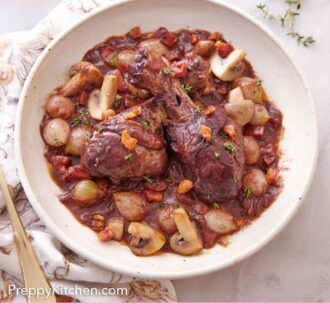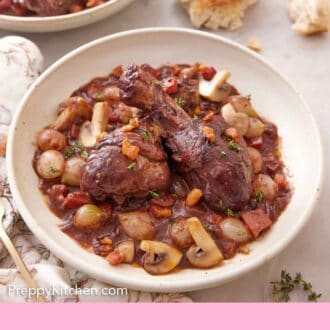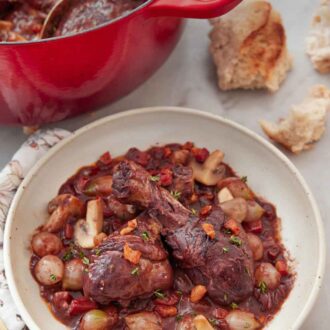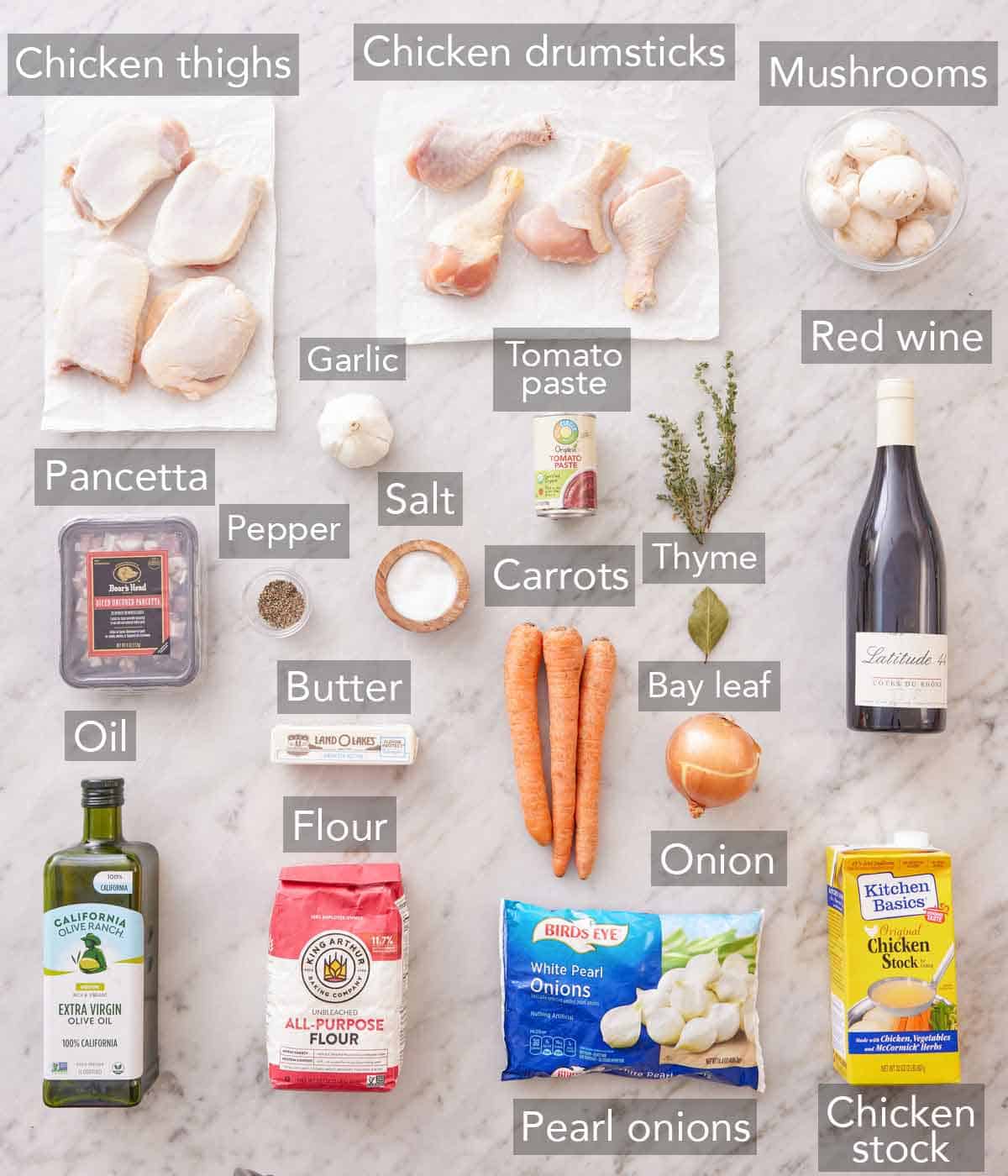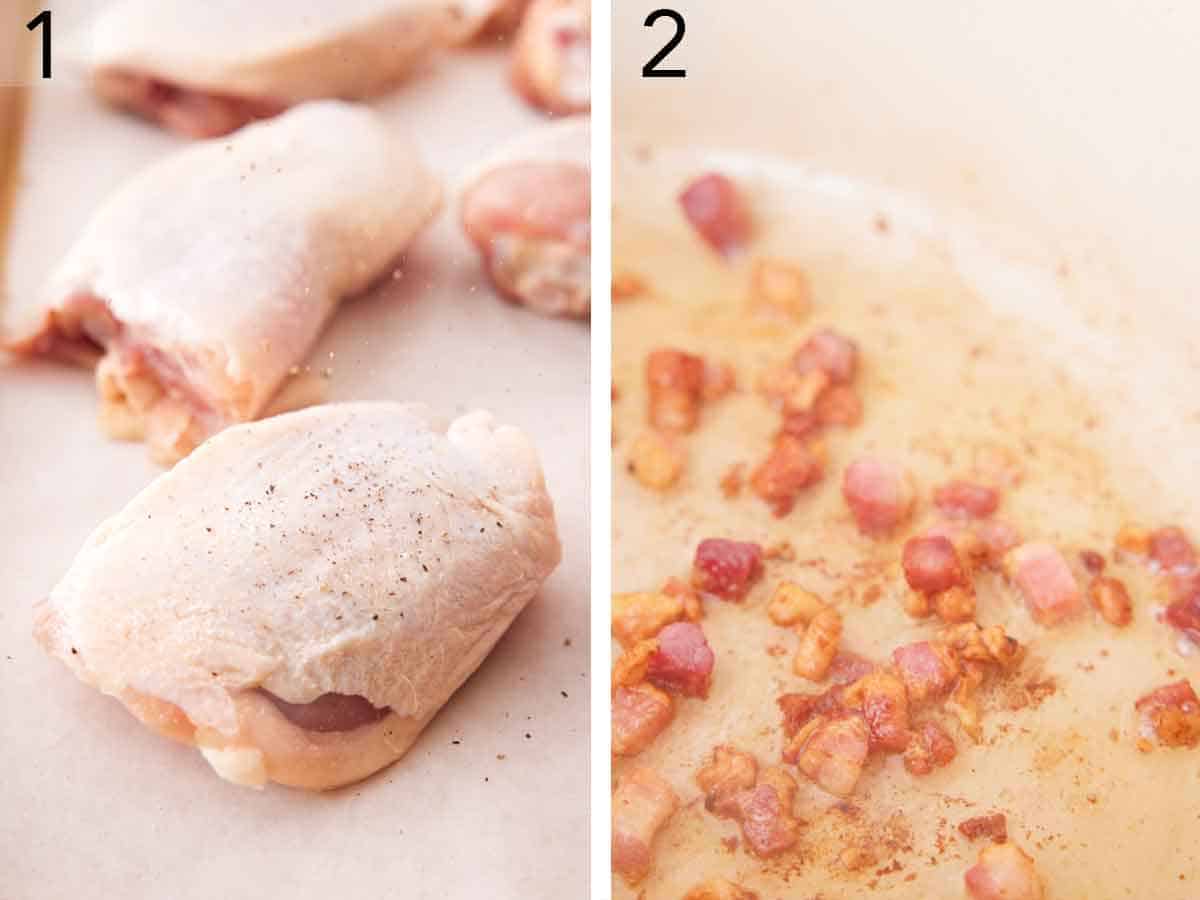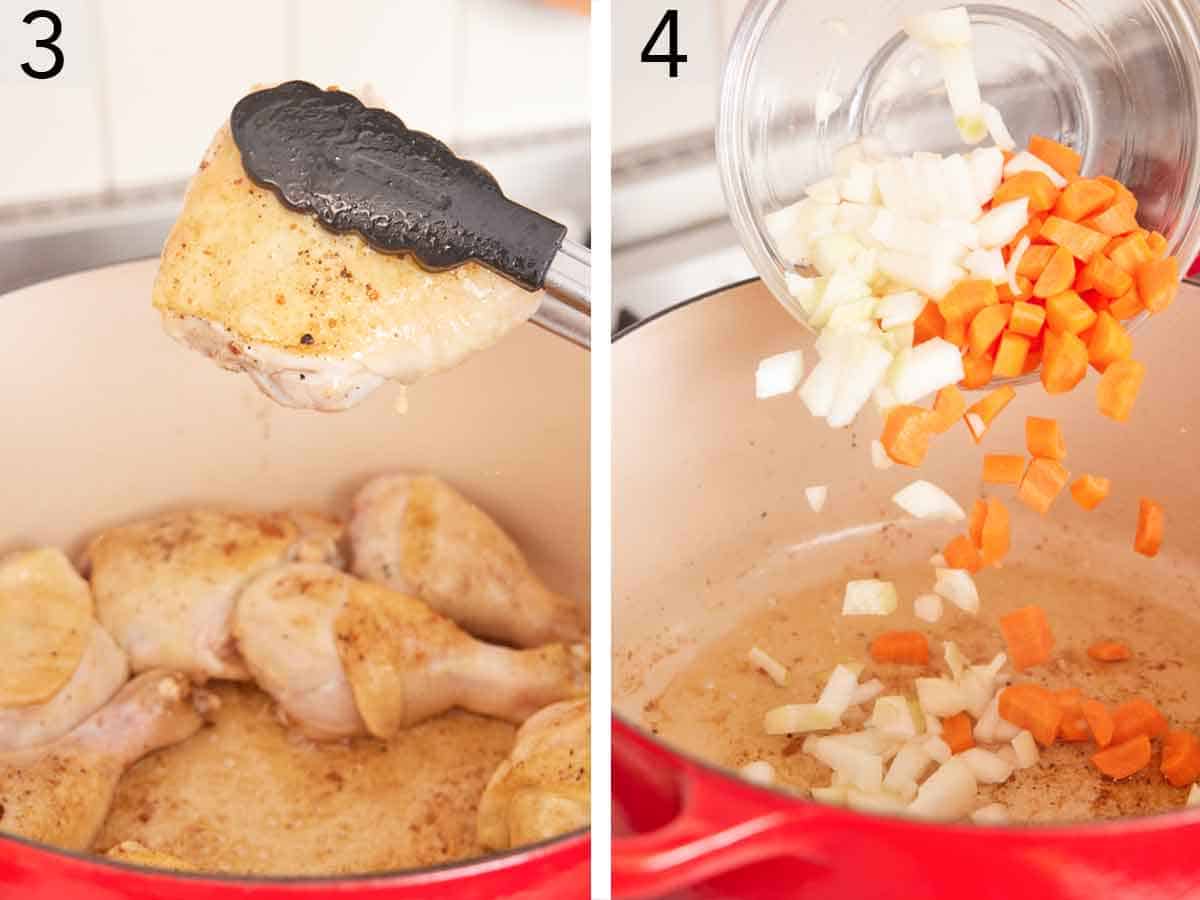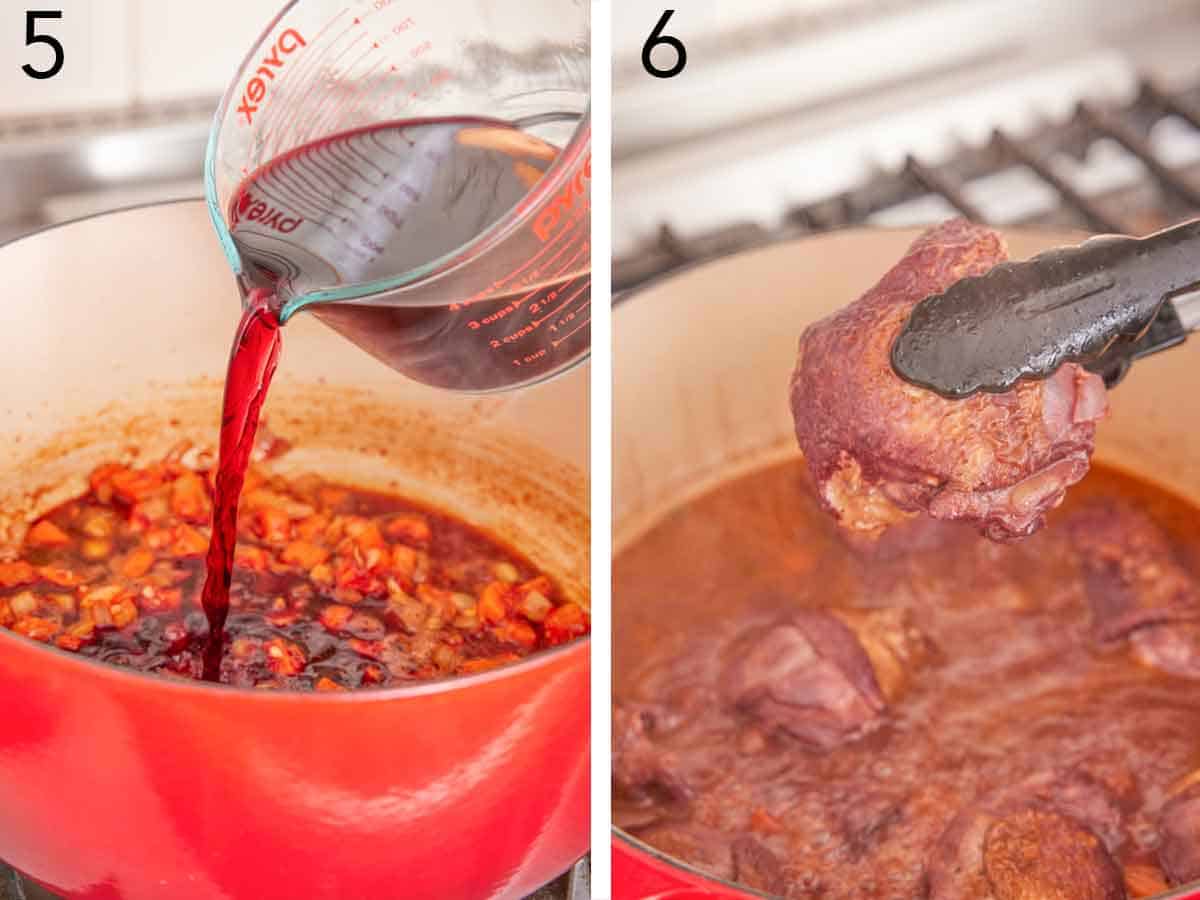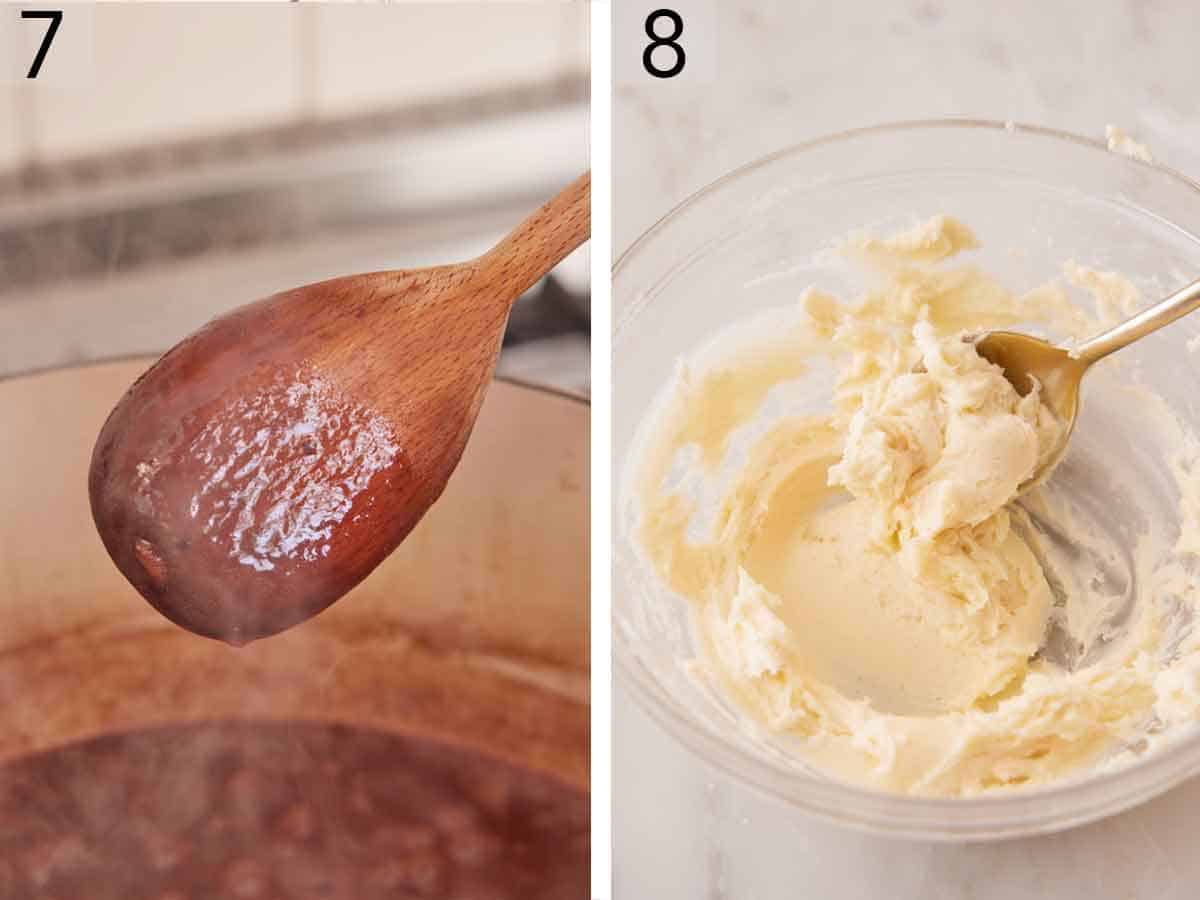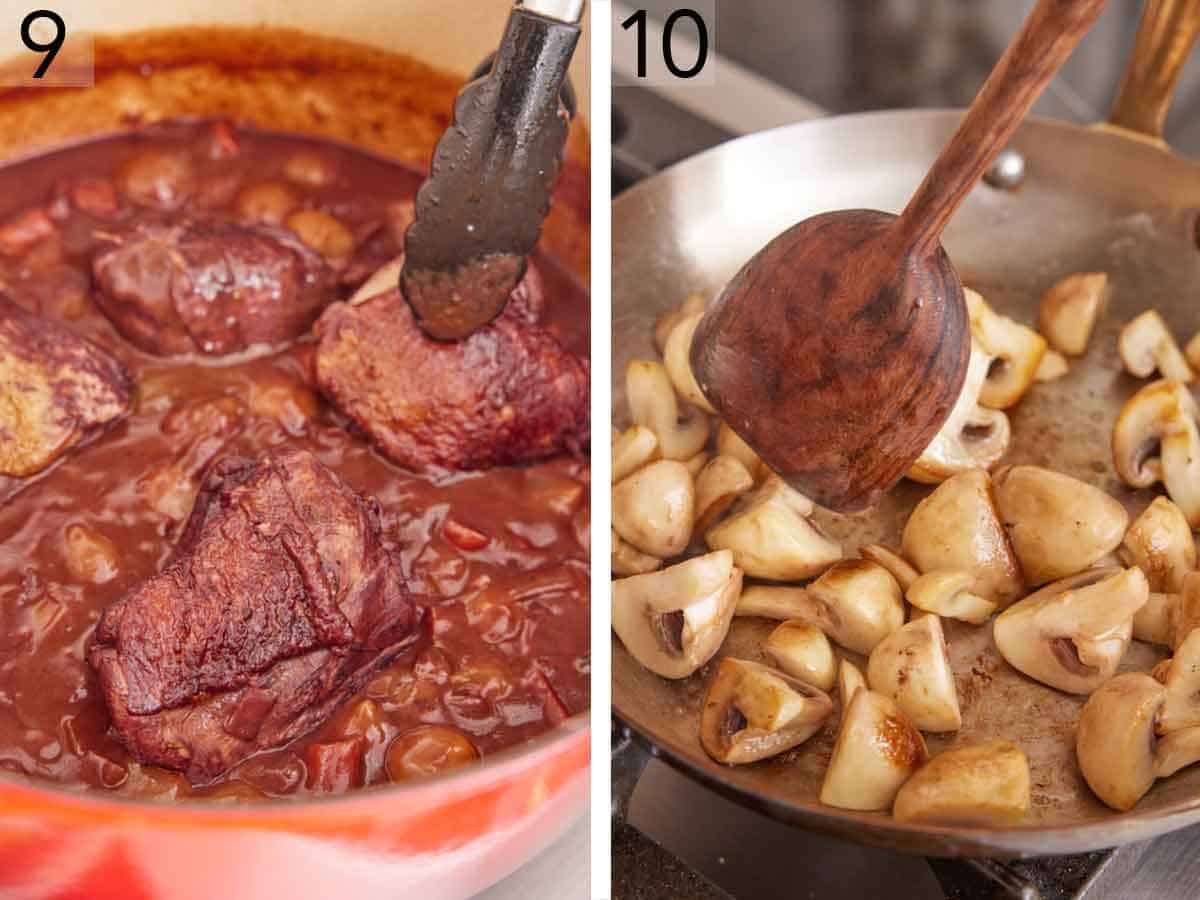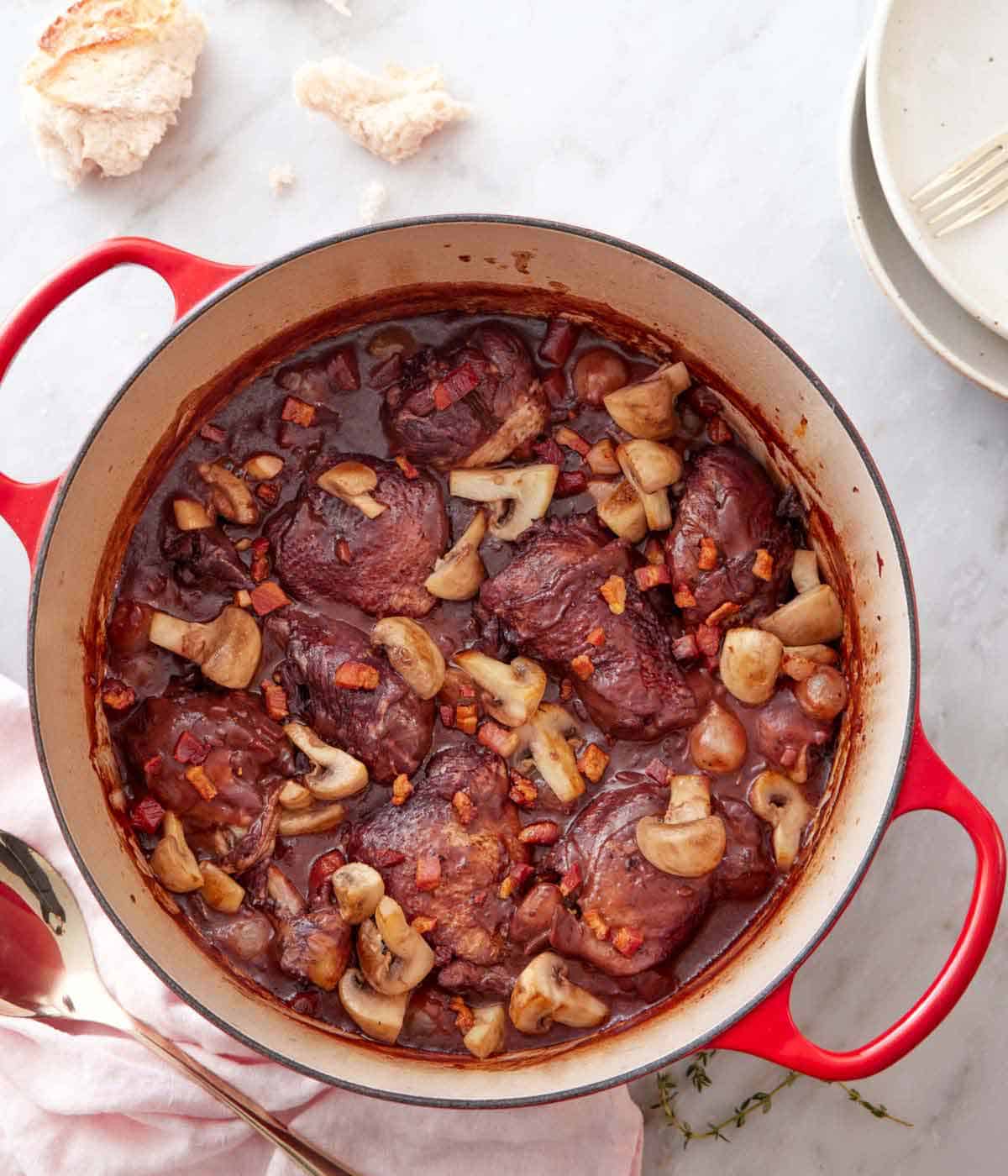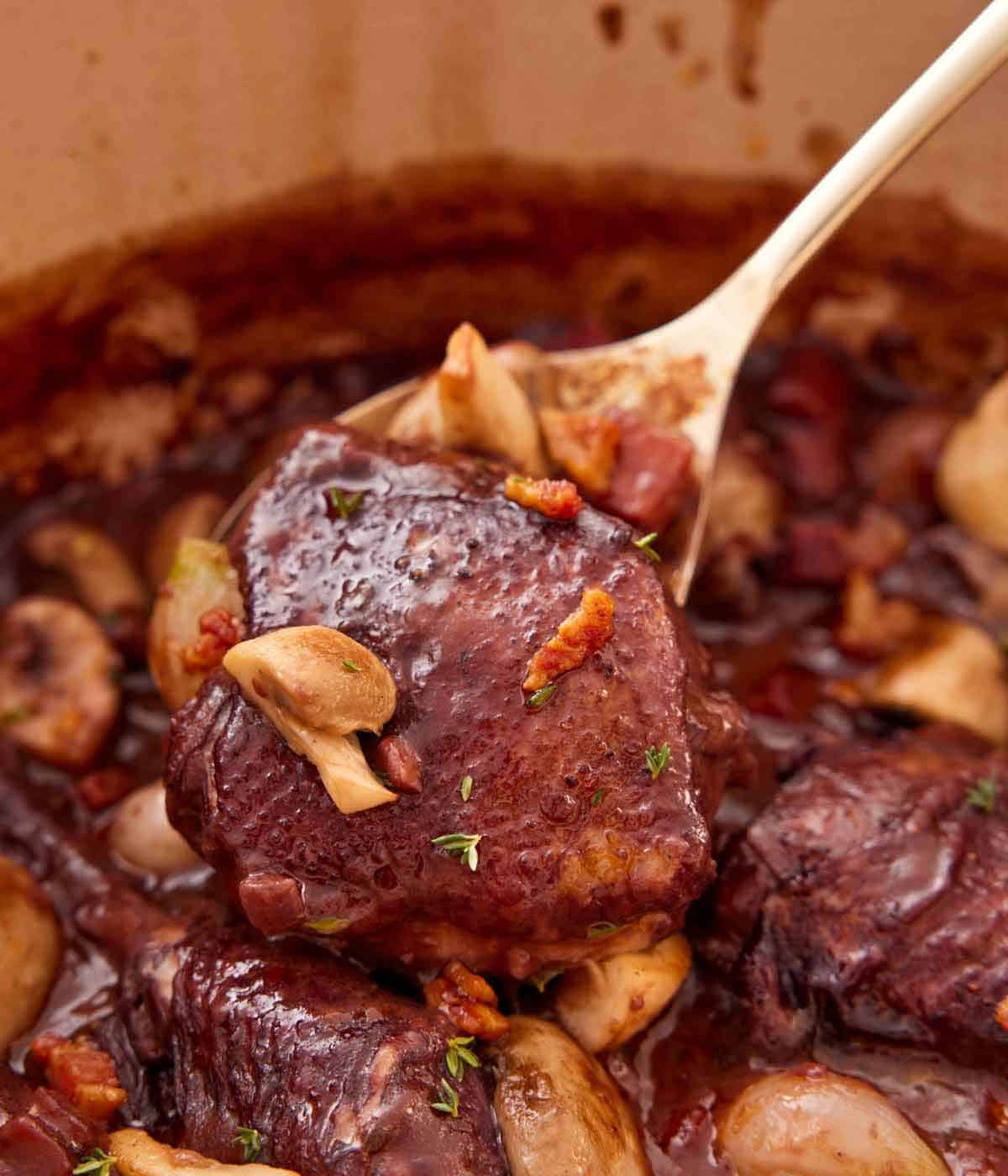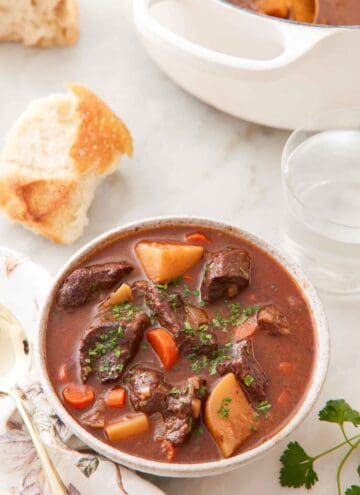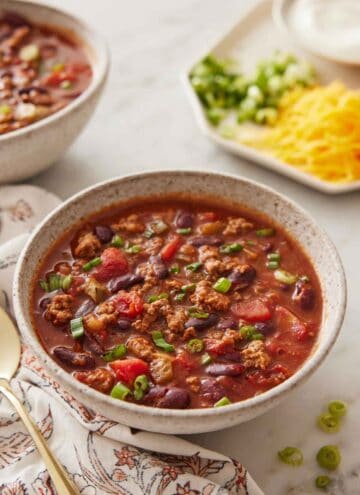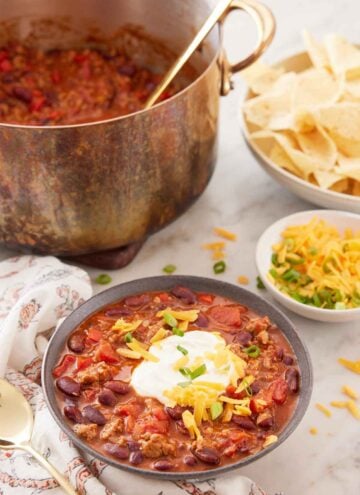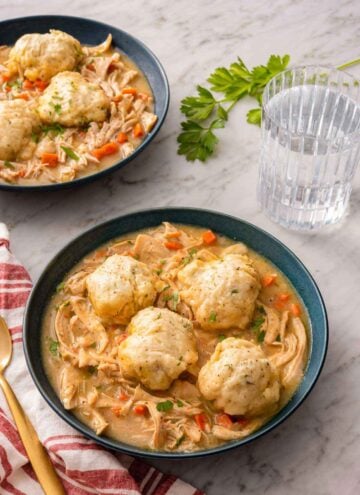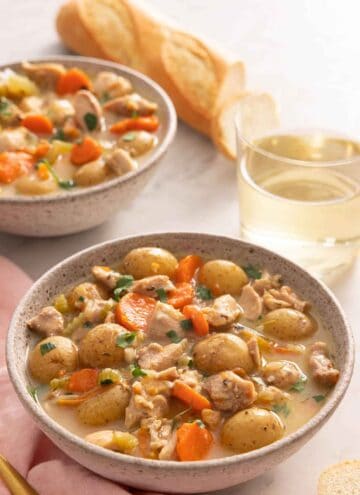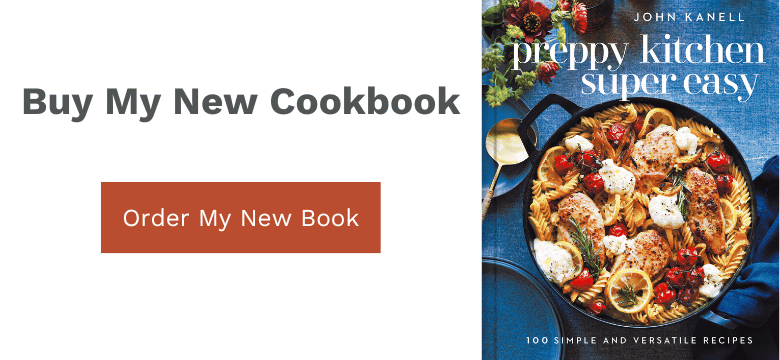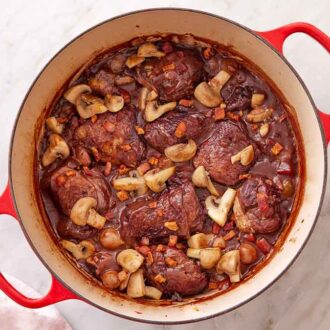While literally translated to “cock in wine”, because it was made with an old rooster, coq au vin is more often made with chicken nowadays — roosters just aren’t as easy to come by! The traditional recipe calls for a whole cut-up bird, but for guaranteed fall-apart tender chicken, opt for all dark meat pieces instead. Because it isn’t a quick dish, I recommend trying this coq au vin recipe on a weekend or night when you have time to spare. It is simple enough to serve your family, but will also wow guests at a dinner party. Personally, I whip up a batch whenever I want a cozy chicken dinner with a little extra oomph. For other chicken dinner recipe ideas, try my chicken stew, chicken Francese, and spinach stuffed chicken breast.
What You Need to Make This Recipe
Chicken — Julia Child’s coq au vin recipe calls for a whole chicken, which you can certainly use, but I prefer using bone-in skin-on drumsticks and thighs. Pancetta or bacon — you can use either pancetta or bacon. Just know that if you use bacon, your stew may have an ever so slightly smoky flavor (because bacon is cured and smoked, whereas pancetta is only cured). Vegetables — you’ll need carrots, a yellow onion, and peeled pearl onions. I don’t often like to fuss with peeling fresh pearl onions, so I grab a bag of frozen pearl onions- just as delicious as fresh without the hassle. Tomato paste — tomato paste adds richness and depth to the stew. Red wine — the best options are a red Burgundy wine like Pinot Noir, or a Bordeaux, Zinfandel, Cabernet Sauvignon, or Merlot. Beurre manié — this mixture of softened butter and all-purpose flour thickens the chicken stew. Mushrooms — cremini mushrooms or button mushrooms work well in this recipe. Simply wash the mushrooms and cut them into quarters, and they’re ready to cook!
How to Make Coq Au Vin
- Pat the chicken pieces dry and season well with salt and pepper.
- Cook the diced pancetta over medium heat in a large Dutch oven. Once it is crispy and has rendered some tasty fat, remove it from the pot with a slotted spoon and drain on paper towels. Keep the rendered fat in the pot for the next step.
- Place the chicken skin side down in the pancetta drippings and cook until the skin has some color and easily releases from the Dutch oven. This will take 8 minutes or so. Remove the chicken and set it aside for now.
- Add the prepared carrots and yellow onion to the pot and cook. Stir frequently and cook for about 5 minutes, until the onion starts to soften. Add the minced garlic and tomato paste. Cook until the tomato paste starts to darken.
- Deglaze the pot by pouring in the red wine while carefully scraping the bottom of the pan to loosen the brown bits. Then pour in the chicken stock, fresh thyme, bay leaf, salt, and pepper. Place the browned chicken back into the pot and bring the mixture to a simmer.
- Cover the Dutch oven and reduce the heat to medium-low. Cook until the chicken is fully cooked, which will take 30 to 40 minutes. When chicken is cooked through, it will have an internal temperature of 165°F when measured with a meat thermometer. Remove the chicken and set it aside for now.
- Increase the heat to medium-high and simmer until the liquid has reduced by about one-third. This will take about 15 minutes. The sauce should be thick enough to coat the back of a spoon. If the sauce has thickened too much, add in a little more chicken stock to thin it back out. If it’s too thin, continue simmering for a few minutes to let it thicken up.
- Mix together softened butter and flour. The resulting paste is called a beurre manié. Add it to the pot, and it will thicken the stew after about 5 minutes.
- Do a little taste test and add more salt and pepper if needed. Drop the peeled pearl onions into the Dutch oven and nestle the cooked chicken back in as well. Simmer on low heat until the chicken has warmed through.
- While the chicken is heating up, cook the mushrooms in olive oil and butter for about 10 minutes in a large skillet over medium-high heat. Scatter the mushrooms and cooked pancetta over the top. Serve immediately.
Pro Tips for Making This Recipe
Use dark meat for succulent chicken. While Julia Child’s popular coq au vin recipe calls for a whole bird, I prefer using chicken thighs and drumsticks as they remain juicy during the long cooking time. White meat is much more prone to drying out. Avoid cooking wine. As I mentioned earlier, red Burgundy wine is the typical choice. However, most red wines will work well. Avoid cooking wine, and instead opt for a wine you enjoy drinking as it will make a rich sauce with much better flavor. It doesn’t need to be an expensive bottle! Blanch pearl onions to make them easy to peel. Bring a pot of water to a rolling boil and carefully add the pearl onions. Boil for about 2 minutes before transferring the pearl onions to an ice bath. Then, cut off the root end of the onions. The onion should pop right out of the peel if you squeeze the stem end. Use frozen pearl onions instead. If you don’t want the hassle of peeling fresh pearl onions, use frozen ones that have already been peeled. Measure them while frozen and let them thaw before adding them to the sauce. Make coq au vin a day in advance. Like beef stew (and pretty much all other kinds of stew), this recipe tastes even better the next day. The flavors meld beautifully overnight, so if you’re able to, cook this dish a night in advance.
If you’ve tried this recipe, then don’t forget to rate the recipe and let me know how you got on in the comments below, I love hearing from you!


